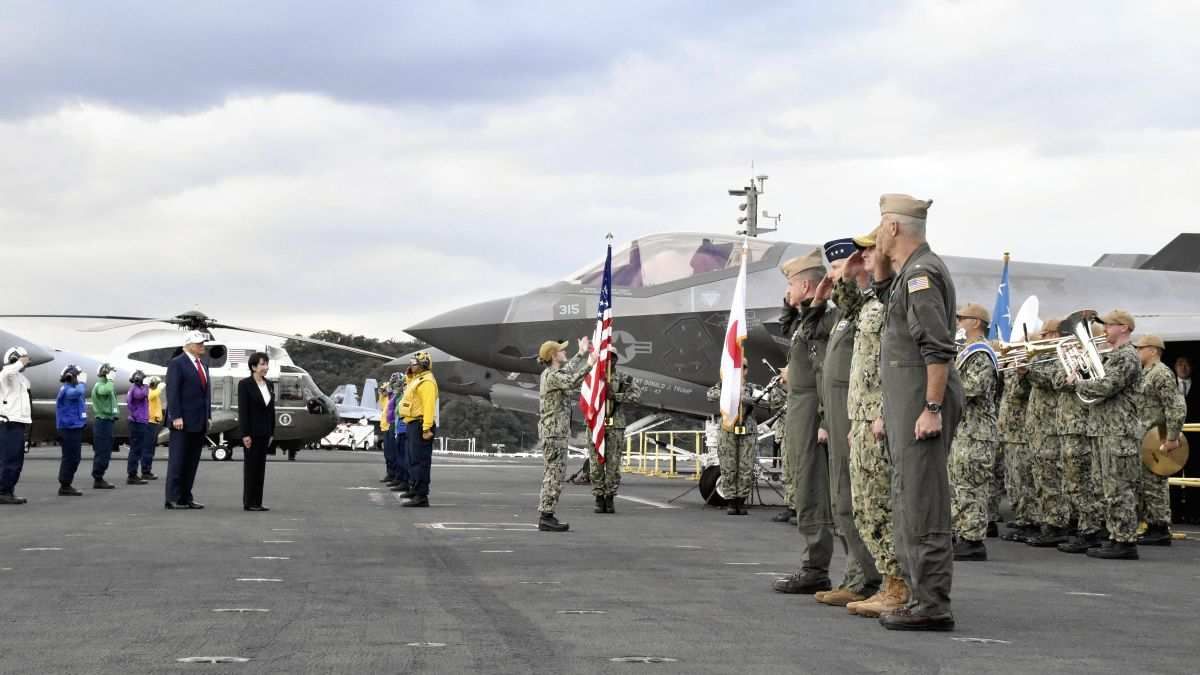Last Thursday, US President Donald Trump announced that Washington will restart nuclear-weapons testing, raising fears that it could end a 33-year moratorium on nuclear-warhead testing.
“Because of other countries (sic) testing programs,”Trump said, “I have instructed the Department of War to start testing our Nuclear Weapons on an equal basis. That process will begin immediately.”
What is nuclear testing? Nuclear powers – including the US, Russia, and others – test missiles and other delivery systems regularly. Russia has recently been developing new cruise missiles and underwater drones that are nuclear capable. However, no nation other than North Korea has been confirmed to test a nuclear warhead in over three decades. In an interview aired Sunday on CBS, Trump claimed, “Russia’s testing, and China’s testing, but they don’t talk about it.” Both countries deny the allegation. International agreements from the 1960s ban nuclear testing.
What tests will the US actually conduct? On Sunday, Energy Secretary Chris Wrighttold Fox News, “I think the tests we’re talking about right now are systems tests... These are not nuclear explosions. These are what we call noncritical explosions.”
Why announce testing now?Trump made the announcement just prior to meeting Chinese President Xi Jinping in South Korea last Thursday. In the past five years, Beijing has doubled its nuclear arsenal to 600 weapons, and the Pentagon estimates that China will have more than 1,000 by 2030. According to the Federation of American Scientists, the US and Russia are still the top two nuclear powers with 5177 and 5459 respectively.
Vice President JD Vancesaid all three countries have a large nuclear arsenal and that “sometimes you’ve got to test it to make sure it’s functioning and working properly.”
The move comes amidst a disintegrating arms control regime. In the 1970s and 80s the US and the USSR sought to limit the growth of their nuclear arsenals through the Strategic Arms Limitation Talks (SALT) I and II and the INF treaty, which reduced total warhead count and eliminated the development of ground-launched nuclear missiles with ranges of 500 to 5,500 kilometers. In the 1990s and 2000s, the US and Russia concluded three Strategic Arms Reduction Treaties (START) Treaties, ultimately capping the number of deployed strategic warheads at 1,550 each.
But in recent years arms control has been unravelling. In 2019, the US withdrew from a treaty that outlawed intermediate range nuclear missiles, because it said Russia had been violating the pact. Four years later, Moscow suspended its participation in START II and resumed testing nuclear weapons delivery systems.
What risks lie ahead? Trump wants to conduct as many tests as Russia and China “within five years,” which could spur both nations to increase their testing to remain competitive. Daryl Kimball, director of the Arms Control Association, warned that Trump's announcement could “trigger a chain reaction of nuclear testing by U.S. adversaries, and blow apart the nuclear Non-Proliferation Treaty.”
Ending the “testing taboo” could also encourage smaller nuclear nations like North Korea, Pakistan and India, and aspiring nuclear powers like Iran, to engage in testing as well.
And even if testing is confined to new delivery systems alone, the race to develop new, stealthier and more destructive nuclear missiles, rockets, and drones is likely to accelerate.
All of this has scientists considering advancing the hands of the so-called “doomsday clock.” Currently, they sit at 89 seconds to midnight – the closest they have ever been.
